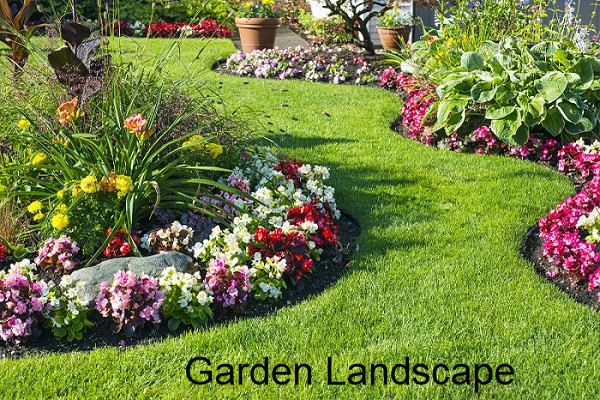A properly-designed garden makes our lives better. But where to start?
Here, our experts round up six simple design tips to create the perfect outdoor space.

6 Tips to Plan and Design Your Outdoor Space
Are you looking to improve the design of your home’s outdoor landscape? Here are a few tips to get started.
- 1. Make a Plan
You don’t necessarily need a professional landscape designer designs. If you want to take a DIY approach, you need to:
- Draw a bird’s-eye view of your property. Make sure to note the placement of every manmade feature (also referred to as ‘hardscapes’), such as stone walls, driveways, fences and buildings. Also include natural elements such as large shrubs, trees and boulders.
- Use graph paper to roughly sketch your property. Don’t agonize over the exact measurements.
- Include the location of buried utility lines, septic systems and wells. This makes it easier for the garden sprinkler system installation company to access water lines and avoid damage.
- 2. Determine What Your Property Needs
Are you thinking of growing vegetables? Do you have children or pets that need outdoor space in which to play? These factors will help you understand what you should include and eliminate from your design. A good idea is to create rough sketches of your landscape and include where you want to place various elements. This gives you the freedom to play around with ideas without investing a lot of time and commitment.
- 3. Understand Your Landscape
Think about your local climate, soil and topography. For this, you should be able to acquire a zoning map from your local zoning office or city hall. Remember, specific conditions in your yard can create a microclimate based on how much sunlight the area receives.
Microclimates can typically be broken down into four distinct categories: deep shade, shade, partial sun and full sun. Knowing about the microclimates in your landscape can help you choose plants that will thrive in specific locations.
Also, take note of your yard’s topography as this is what dictates how water will drain. Good landscape design promotes water flow away from any building’s foundation, towards other areas of the landscape.
- 4. Choose a Style
Your landscape should complement your property’s architectural style.
Keep in mind, gardening is similar to decorating your home’s interiors. But instead of using furniture, paint and fabrics, you incorporate shapes, sizes, textures and colours through plants and other elements.
When designing your garden, there are three styles you can choose from:
- Natural – This style imitates nature and requires less maintenance than other landscape styles.
- Formal – The formal style produces symmetry with straight lines and elegant focal points using well-manicured lawns, fountains, statues and pruned hedges. Colour is secondary to structure to create a serene and refined overall appearance.
- Informal – This style incorporates colours, curves, asymmetry, shrubs and nature-inspired shapes in a balance between natural and formal styles. The design provides a relaxing and comfortable environment that everyone can enjoy.
- 5. Consider What Plants You Want
When you start planning your landscape, think about the plants you want and how they will function.
Plants smell great, look beautiful and produce fresh vegetables and fruits. They can also be used as barriers that define particular areas within the landscape by blocking access and views to those spaces.
If you want some visibility while maintaining some barriers, opt for plants that will not grow high. When placed correctly, they offer control over the light, temperature and wind your garden receives.
Hint: choose plants that will thrive well in your garden’s microclimate.
- 6. Hire an Irrigation Expert
Even if you put a lot of effort into making your yard beautiful and functional, it’s best to hire an irrigation system installation company to ensure it stays that way. Failing to do so might result in an irrigation or sprinkler system that doesn’t function optimally, resulting in wasted resources. Moreover, it can cause major drainage problems that can harm the integrity of the building’s foundation.
A licensed expert will make sure your irrigation system is designed and installed to meet your property needs. This can affect your yard’s appearance, which, in turn, can have a direct impact on your property’s value.
These tips should help you get started on landscape designing. A well-thought-out and realistic plan can help spread out your expenses and work. Take one step at a time to keep your landscape design from overwhelming you. With small and steady improvements, you can transform your landscape into the paradise you envision.

